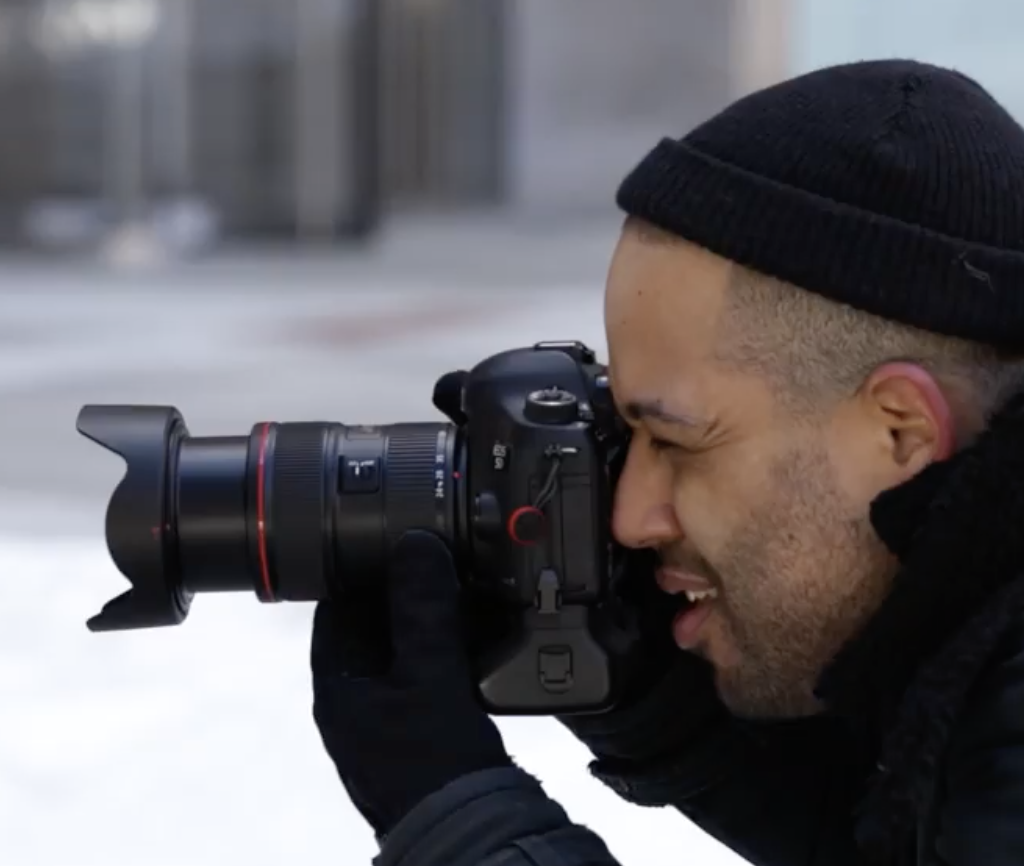A Brief History of Digital Photography | Skillshare Blog
When you think of photography, you probably think of digital photography. But while digital images are the de facto means of photography today, it wasn’t always that way.
The first camera in recorded history, called camera obscura, was invented by an Iraqi scientist in the early 11th century. The earliest surviving photograph, credited to a Frenchman named Joseph Nicéphore Niépce, came much later in 1826, when Niépce used a portable camera obscura to take the famous image known as “View from the Window at Le Gras.”
It would be about 150 years after Niépce’s photograph before the invention of digital cameras. In that time, the field of photography developed and evolved, changing from a highly technical practice that required extensive experience to master into something that anyone could do anywhere with the right equipment. Digital photography took that a step further, elevating the art for professionals while also making high-quality photographs accessible on a consumer level.
So, what is the history of digital photography—and how did we get to where we are now? Here’s a quick and fascinating look at digital photography history as we know it.
Source: Unsplash
Digital cameras make it easier than ever to take pictures of the world around you.
Mục lục bài viết
When Was Digital Photography Invented?
It doesn’t take a rocket scientist to take beautiful digital photos, but it did take one to get us to this point.
The history of digital photography began with Eugene F. Lally of NASA’s Jet Propulsion Laboratory, who in 1961 was trying to figure out how to digitize light signals so that astronauts could take better images and thus better ascertain their position when out in space.
At this point, and for many decades to follow, photography was taken on film—an effective process but one that hardly allowed for the immediate results that Lally was looking for. Unfortunately for Lally, the first filmless camera wouldn’t be invented for about 15 more years, but his early musings helped form the basis of its creation, particularly the idea of using photo sensors instead of film to capture images.
In the years to follow, but still preceding the invention of the digital camera, there were quite a few other advancements in digital photography, many of them also closely related to improving space photography.
Digital photography history then can’t be pinpointed to a single year or a single invention. Instead, digital images are the culmination of various experts working in various years toward similar goals. And we have all of their efforts to thank for digital photography in its current form—even if most of us aren’t using it to position ourselves in the stars.

Find Inspiration All Around You
Still Life Photography: Capturing Stories of Everyday Objects at Home
Take the Class
A Quick Dive Into the Digital Camera
All this talk of digital photography, and we haven’t even made it to the first digital camera yet.
The digital camera breakthrough revolutionized space photography, but it also revolutionized the entire world of photography as a whole. As for the digital camera inventor, he came not from NASA but from another company you might suspect to pop up here: Kodak.
When Was the Digital Camera Invented?
The digital camera was invented in December of 1975 by Steven Sasson, an engineer with Eastman Kodak.
Weighing in at almost nine pounds and looming about as large as a standard printer, the first digital camera isn’t exactly the physical prototype for the cameras we see today, at least from the outside. However, it remains a groundbreaking piece of technology, utilizing CCD (charged-couple device) chips—which are still used as image sensors now—and a whopping 16 batteries to allow the user to take digital images (a process that, at the time, took 23 seconds per photo).
How Digital Cameras Work
Source: Unsplash
There are a lot of different parts to a digital camera, but it’s the interior sensors that are responsible for actually capturing an image.
All cameras take photos by means of capturing light and dark. But unlike film cameras, which imprint those variations in light on a piece of film, digital cameras convert that light into electrical signals. These signals codify the scene into millions of individual pixels, with a string of numbers that designates the color and brightness of each pixel. The end result is digital “directions” which can then be read back to recreate the image on a screen. It also makes it so that the resulting image can be modified with editing software.
The main piece of equipment within a digital camera is a light sensor, which is responsible for creating those aforementioned electrical signals. There are two types of light sensors that may be found in a digital camera: the CCD chips that Sasson used in the first digital camera or a CMOS (complementary metal oxide semiconductor) image sensor, which was invented in the 1960s but didn’t become widely available until the 1990s.
What are the Two Main Types of Digital Photography?
Modern digital photography can be broken down into two types, at least when we’re talking about digital cameras for consumer use: photography with compact digital cameras and photography with high-end digital cameras.
If you’re reading this article on your phone, then you probably have a compact digital camera in your hand right now. This type of digital photography is highly accessible and convenient, putting the power of digital imagery right in everyone’s pocket.
High-end digital cameras are what the pros use—at least for the most part (more on that below). These are standalone cameras with lots of technical features and settings, leading to the highest quality digital photography. Compact digital cameras have improved steadily throughout the years, though they can’t usually compare in terms of overall results.
Interesting Digital Photography Statistics & Facts
Photography has come a long way from camera obscura and Joseph Nicéphore Niépce’s “View from the Window at Le Gras.”
From smartphones to doorbell cameras to pricey Canon and Nikon DSLRs, a huge population in both the U.S. and beyond now has the ability to create digital imagery. Couple this with a proliferation in photo editing apps and tools, and it truly is easier than ever for your everyday person to take a great digital photo.
So what does the industry look like today? Here are some interesting facts and figures outlining just how popular digital photography is as a medium.
- Overall revenue for the sales of digital cameras is currently at $22.37 billion a year and is expected to reach $24.35 billion in the year 2025.
- More than 60% of Gen Zers own or use a digital camera, not including smartphone cameras.
- Smartphones now account for a huge majority of the digital photos taken worldwide. In 2017, it was estimated that smartphones would account for 85% of the 1.2 trillion digital photos that would be taken that year.
The rise in digital photography has coincided with a sharp drop in the use of film cameras. The early 2000s saw a steep decrease in worldwide film camera purchases, followed by a similarly notable decrease in digital cameras from 2010 to 2020, with purchases of standalone digital cameras being quickly overtaken by smartphone camera technology. However, standalone digital cameras are still widely in use, and they don’t appear to be going anywhere.
Do Professional Photographers Use Smartphone Cameras?
Yes—and no.
As you might expect, professional photographers are just as likely as the rest of us to own a smartphone. However, they’re still primarily reliant on high-quality standalone digital cameras when it comes to their work.
Among professionals, 64% have never used a smartphone for professional photos, and 14% have never even used a smartphone for personal photos. For those who have reached for the camera phone, 13% say they use a smartphone for at least half of their professional photos, while 64% say they use a smartphone for at least half of their personal photos.
What’s the takeaway? Most of the pros seem to find the digital cameras on smartphones to be perfectly suitable for personal photos—which is good news for those of us who want high-quality digital pictures without investing in an expensive camera. But when it comes to their professional work, high-end digital cameras are still the preferred way to go.
How Do I Start Digital Photography?
Don’t get overwhelmed by the technical aspects of digital photography. If you’re interested in learning how to do it well, there are lots of courses and guides available online that can help you navigate both digital techniques and the terminology behind them (including a ton of expert-led resources right here on Skillshare).
Keep in mind that you’re probably best off studying up on digital photo editing along with digital photography. This will help ensure that you can make the most of your talents and produce some seriously stunning photos.
It’s never been easier—or cheaper—to hone your skills in digital photography and editing. If you’re totally new to the field, consider learning the basics of iPhone photography and free or low-priced editing apps before investing in higher quality equipment. That will give you a chance to make sure that digital photography is something that you enjoy, and it’s also a great introduction to the elements, tenets, and best practices behind the art form.
Stop Reading, Start Snapping!
If the history of digital photography has taught us anything, it’s that there’s always room to push the limits of what’s possible. As you learn the ins and outs of how to take a great digital photograph, work on establishing your unique style and point of view, discovering what you can bring to the table as a digital photographer that no one else can.

Become a DSLR Master
Fundamentals of DSLR Photography
Take the Class











